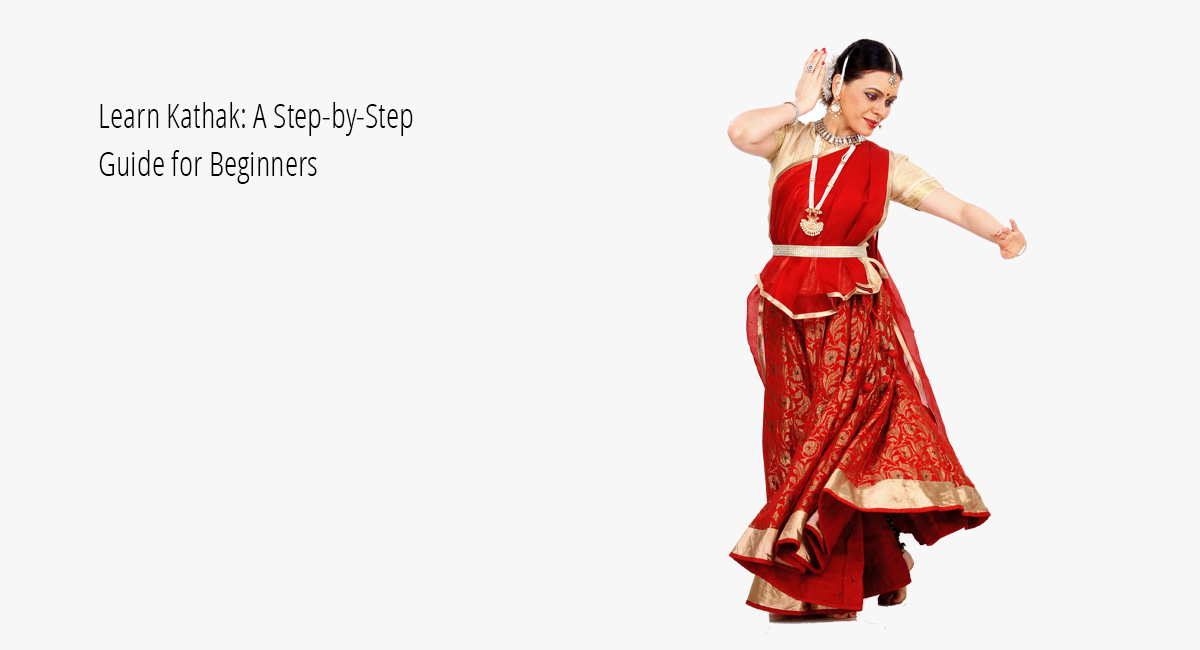
Learn Kathak: A Step-by-Step Guide for Beginners
Table of Contents
Kathak And Its Cultural Significance
Kathak is a classical dance form that originated in northern India, and is known for its intricate footwork, expressive hand gestures, and graceful movements. The word “Kathak” is derived from the Sanskrit word “Katha,” which means story, and the dance form is often used to tell stories through movement and expression.
Kathak has a rich cultural significance, and has been practiced for centuries as a form of storytelling and entertainment. It was traditionally performed in royal courts and temples, and was later adapted for the stage. Today, it is a popular dance form both in India and around the world, and is often performed at cultural events, weddings, and other celebrations.
1. Types Of Hand Gestures And Facial Expressions Used In Kathak
One of the defining characteristics of Kathak is its use of hand gestures, or mudras, and facial expressions, or abhinaya, to convey meaning and emotion. There are a wide variety of mudras and abhinaya in Kathak, each with its own specific meaning and purpose.
Some common mudras in Kathak include the shikhara, which represents a mountain or peak; the kapittha, which represents a flower bud; and the tripataka, which represents a sword or weapon. These mudras are often used to depict characters or objects in a story, and can help to convey the mood and emotion of a particular scene.
Facial expressions are also an important part of Kathak, and are used to convey a wide range of emotions, from joy and happiness to sadness and grief. Some common facial expressions in Kathak include the smile, the frown, and the raised eyebrow, each of which can be used to convey a different emotion or mood.
2. Learning the Basic Steps
If you are interested in learning Kathak, the first step is to find a qualified teacher or dance school. It is important to choose a teacher who is experienced in the style of Kathak you wish to learn, and who can provide personalized instruction and feedback.
Once you have found a teacher, you can begin to learn the basic steps and movements of Kathak. Some common steps in Kathak include the tukra, which is a short combination of steps; the chakkars, or spins; and the footwork patterns, which are often fast and intricate.
In addition to learning the steps, it is also important to work on your posture and alignment. Kathak requires a strong and stable core, and good posture and alignment are essential for executing the movements correctly and safely.
3. Mastering the Technique
As you progress in your Kathak studies, you will begin to focus more on mastering the technique and refining your movements. This may involve working on your footwork, hand gestures, and facial expressions, and learning more complex combinations and sequences.
One important aspect of Kathak technique is the use of rhythm and timing. Kathak is known for its complex rhythms and time signatures, and it is important to develop a strong sense of rhythm and timing in order to execute the movements correctly.
Another important aspect of technique is the use of improvisation. Improvisation is a key part of Kathak, and allows the dancer to express themselves creatively and respond to the music and mood of the moment. Developing your improvisational skills can take time and practice, but can be a rewarding part of your Kathak journey.
4. Music and Rhythm in Kathak
Music and rhythm are central to Kathak, and the dance form is often accompanied by live music, including tabla drums, harmonium, and vocals. The music in Kathak is often composed of intricate rhythms and melodies, and is designed to complement the movements and expressions of the dancer.
As you learn Kathak, it is important to develop your sense of rhythm and musicality. This may involve learning about different types of rhythms and time signatures, as well as understanding the structure of the music and how it relates to the dance movements.
In addition to learning about the music and rhythm, it is also important to develop a strong relationship with your musicians. The musician-dancer relationship is a key part of Kathak, and working closely with your musicians can help you to develop a deeper understanding of the music and its role in the dance.
5. Preparing for Performance
As you progress in your Kathak studies, you may have opportunities to perform in front of an audience. Performing can be an exciting and rewarding experience, but it also requires preparation and practice.
Before a performance, it is important to rehearse your movements and expressions, and to work on developing your stage presence and confidence. You may also need to prepare your costume and makeup, and work with your musicians to ensure that the music and dance are synchronized.
Performing can be nerve-wracking, but it is important to remember that the audience is there to support and appreciate your artistry. By staying focused and centered, and trusting in your training and preparation, you can give a memorable and impactful performance.
6. Continuing Your Learning Journey
Learning Kathak is a lifelong journey, and there is always more to explore and discover. As you progress in your studies, you may want to seek out new teachers or dance schools, attend workshops and performances, or explore related dance forms or artistic disciplines.
It is also important to continue practicing and refining your technique, and to stay open to feedback and critique. By staying dedicated and committed to your craft, you can continue to grow and develop as a dancer, and deepen your understanding and appreciation of Kathak and its cultural significance.
Conclusion
In conclusion, learning Kathak can be a rewarding and enriching experience for beginners and experienced dancers alike. By finding a qualified teacher, practicing your basic steps and technique, developing your musicality and improvisational skills, and preparing for performance, you can unlock the beauty and complexity of this ancient dance form. With dedication and perseverance, you can continue to grow and evolve as a Kathak dancer, and make meaningful connections with the music, culture, and traditions of northern India. Our company website has further information on how one should master the delicate craft of Kathak.

I am a Pune based artist, Kathak dancer, Dance Movement Therapist, and an avid Yoga practitioner/ teacher. I am also the Director at the Sakal Media Group, a Trustee of Pune Blind School and Nirdhar Trust.
Being a part of Sakal Media Group, with its strong foundation of service and ethical journalism, I am deeply committed in making this world a better place by pushing boundaries, giving opportunities to others, following my convictions, helping others make better choices and to tell powerful stories that will help reshape the world we live in.





